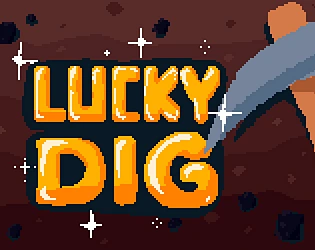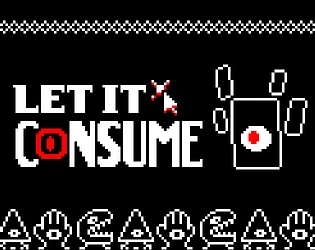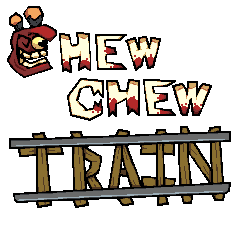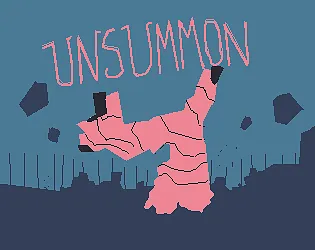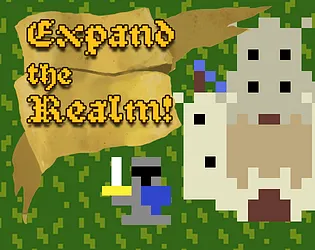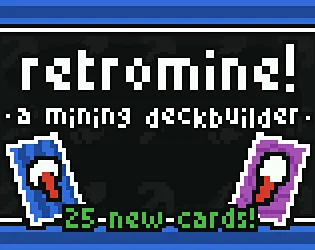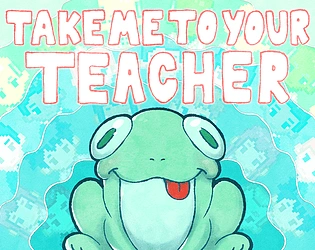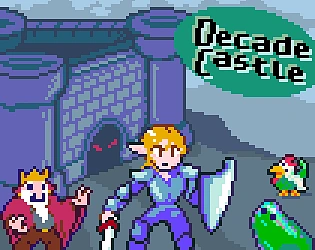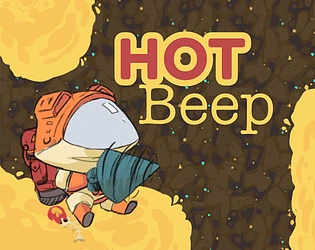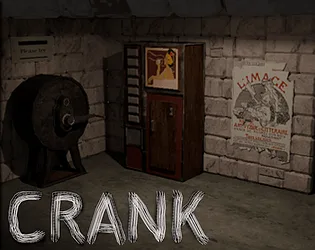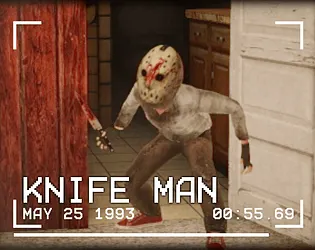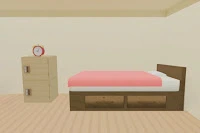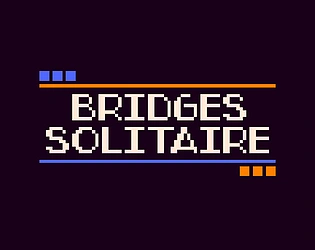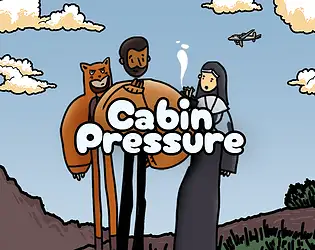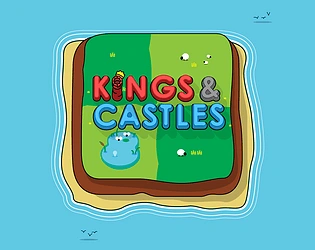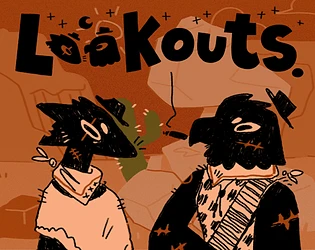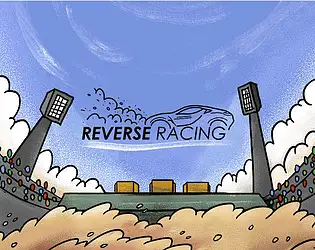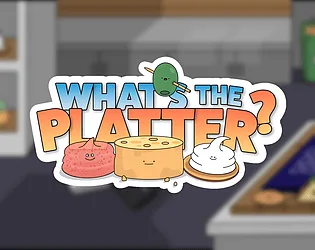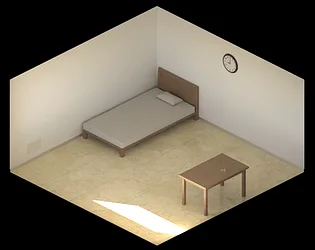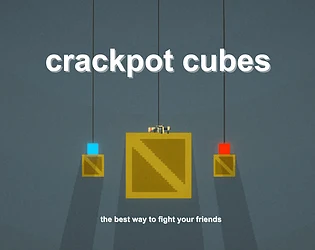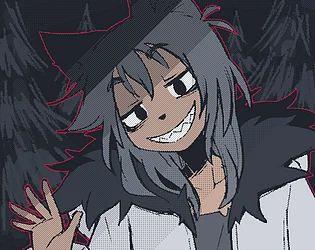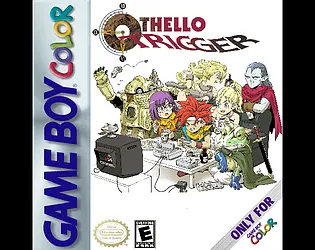
Othello Trigger
Play Othello with Chrono Trigger characters in this Game Boy-styled tribute
Othello Trigger
Othello Trigger — The Board Game Sequel Chrono Trigger Fans Never Expected

Othello Trigger answers the question nobody asked: what if the Chrono Trigger gang's post-Lavos adventures involved playing classic board games? This loving tribute wraps the timeless strategy of Othello in authentic Game Boy Color aesthetics, complete with cutscenes showing what happened after saving the world. Face off against Robo across three difficulty levels, enjoy visual callbacks to the SNES classic, and experience the satisfying tile-flipping gameplay of Othello rendered in nostalgic 2-bit pixel art.
🎮 What is Othello Trigger?
Othello Trigger is a fully functional Othello game (also known as Reversi) dressed in Chrono Trigger fan-tribute clothing. If you've never played Othello, the rules are elegantly simple: players take turns placing colored pieces on an 8×8 grid, attempting to trap opponent pieces between their own. Trapped pieces flip to your color. The player with the most pieces of their color when the board fills wins.
The game opens with cutscenes showing the Chrono Trigger characters after defeating Lavos—a charming narrative frame for what is fundamentally a strategic board game. You'll then face Robo, the robot companion from Chrono Trigger, in head-to-head Othello matches.
What makes Othello Trigger special isn't revolutionary gameplay—it's classic Othello, after all—but the presentation. The entire experience is crafted to look and feel like an authentic Game Boy Color game, complete with:
- Limited color palette using only original Game Boy DMG colors
- Authentic tile-based graphics converted from 16-bit SNES sprites to 2-bit Game Boy aesthetics
- Loading delays that mimic the original hardware's turn processing
- Visual cues indicating when it's your turn, just like classic handheld games
- 16×16 board with each position represented by 2×2 tiles for better visibility
The developer even included features absent from the original high school Pascal version: selectable difficulty levels (Easy, Normal, Hard), the option to choose whether you go first or second, and a helpful display showing available legal moves.
🕹️ How to Play Othello Trigger
Othello Trigger uses simple Game Boy-style controls that make the strategic gameplay accessible:
Controls
| Action | Input |
|---|---|
| Move Cursor | D-pad / Arrow Keys |
| Place Piece | A Button / Space / Enter |
| Navigate Menus | D-pad / Arrow Keys |
| Confirm Selection | A Button / Space / Enter |
Othello Rules
- Starting position – The board begins with four pieces in the center: two of each color in diagonal arrangement
- Legal moves – You can only place a piece where it traps at least one opponent piece between your new piece and an existing piece of your color
- Flipping pieces – All opponent pieces trapped in straight lines (horizontal, vertical, diagonal) flip to your color
- Taking turns – Players alternate placing pieces; if you have no legal moves, your turn is skipped
- Game end – The game ends when the board is full or neither player has legal moves
- Winner – The player with the most pieces of their color wins
Strategy Tips
- Control corners – Corner positions can never be flipped; securing them is crucial
- Avoid edges early – Edge pieces can be vulnerable if they don't lead to corners
- Minimize mobility – Sometimes giving your opponent fewer legal moves is better than maximizing flips
- Think ahead – Consider how your move opens opportunities for your opponent
- Control the center – Early game center control provides flexibility
- Save corners for late game – Don't rush to capture corners; timing matters
📸 Othello Trigger Gameplay Walkthrough
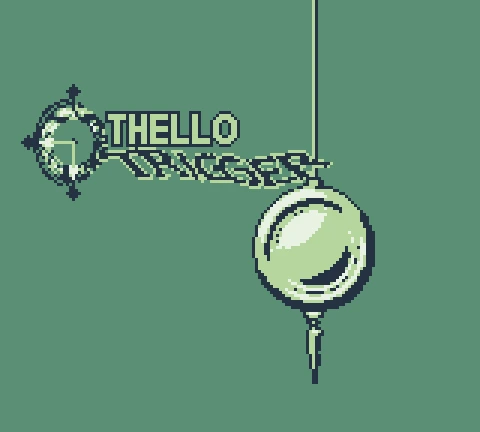
🎬 Post-Lavos Cutscenes
Othello Trigger opens with charming cutscenes showing the Chrono Trigger gang after their world-saving adventure. The game begins "the way life starts," then takes you through narrative sequences revealing what happened after Lavos was defeated.
These scenes are pure fan service, lovingly crafted to look like they could have existed on actual Game Boy Color hardware. The developer painstakingly converted 16-bit SNES graphics to 2-bit Game Boy aesthetics while maintaining recognizable character designs.
For Chrono Trigger fans, these cutscenes provide the lighthearted "what happened next" closure that official sequels never delivered. For everyone else, they're a charming introduction to a well-implemented Othello game.
Eventually, you'll face Robo—the robot companion from the original game—who challenges you to Othello matches. Because apparently, in the post-apocalypse-that-never-was, board games are how friendships are maintained.
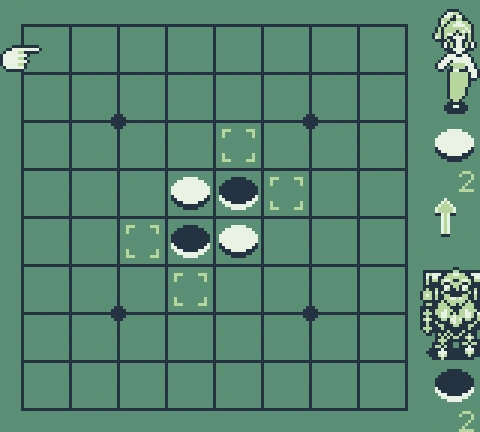
🎮 Game Boy Authentic Experience
When you start playing Othello Trigger, the attention to Game Boy Color authenticity becomes immediately apparent. The interface looks exactly like a handheld game from that era:
- Limited color palette restricted to original DMG greens and grays
- Tile-based board where each Othello position uses a 2×2 tile grid for visibility
- Deliberate loading delays between turns that mimic original hardware processing
- Visual indicators showing when it's your turn to move
The developer had to make technical compromises to achieve this authenticity. A standard 8×8 Othello board would only fill a quarter of the Game Boy screen, so they expanded to a 16×16 grid with each position represented by larger tiles. This required 256 tiles for the board alone—exceeding the 192-tile limit of the original Game Boy but fitting within Game Boy Color's 384-tile allowance.
These technical details might seem arcane, but they result in a game that genuinely looks and feels like lost Game Boy Color software discovered decades later.
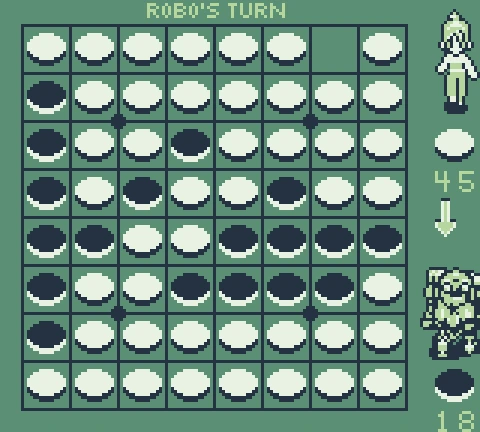
♟️ Strategic Othello Gameplay
Beneath the Chrono Trigger theming and Game Boy aesthetics, Othello Trigger is a legitimate, well-implemented version of Othello with competent AI.
The game offers three difficulty levels:
Easy – The original AI developed by the creator in high school before it was upgraded to Normal. This is the first time this AI has been playable since the game's Pascal origins.
Normal – The AI that existed in the original high school version and was ported through JavaScript before arriving on Game Boy Color.
Hard – A completely new AI implementation created specifically for this version. The developer notes it could have been more robust but faced limitations working without arrays or matrices in GB Studio.
The AI provides genuine challenge across all difficulty levels. Easy mode is forgiving for Othello newcomers. Normal provides balanced competition. Hard demands strategic thinking and forward planning.
The game also includes helpful features like highlighting available legal moves—a quality-of-life addition that makes learning Othello more accessible without dumbing down the strategic depth.
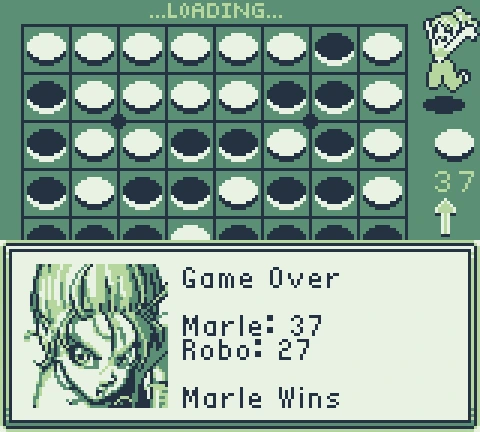
🏆 Mastering the Board
Winning at Othello Trigger requires the same strategic thinking as any Othello game: corner control, edge management, mobility restriction, and careful forward planning.
The Game Boy presentation doesn't dilute the strategic depth. You'll still need to:
- Secure corners to establish unflippable positions
- Control edges carefully to avoid giving your opponent corner access
- Limit opponent options by forcing them into bad moves
- Plan multiple moves ahead to set up favorable board states
- Adapt strategy based on early, middle, and late game phases
What Othello Trigger adds to this timeless formula is charm. Playing Othello against Robo in a lovingly crafted Game Boy tribute creates a unique experience that transcends both the Chrono Trigger fandom and classic board game adaptation.
Othello Trigger is a passion project in the best sense—a functional, well-designed Othello implementation wrapped in layers of retro gaming nostalgia and RPG fan service. Whether you're a Chrono Trigger devotee curious about what happened after Lavos, an Othello enthusiast looking for a charming digital version, or a Game Boy Color nostalgist who appreciates authentic 2-bit aesthetics, this game offers surprising depth beneath its playful premise.
It's not the Chrono Trigger sequel anyone expected, but it might be the board game tribute the JRPG community didn't know it wanted.
Othello Trigger — The Board Game Sequel Chrono Trigger Fans Never Expected

Othello Trigger answers the question nobody asked: what if the Chrono Trigger gang's post-Lavos adventures involved playing classic board games? This loving tribute wraps the timeless strategy of Othello in authentic Game Boy Color aesthetics, complete with cutscenes showing what happened after saving the world. Face off against Robo across three difficulty levels, enjoy visual callbacks to the SNES classic, and experience the satisfying tile-flipping gameplay of Othello rendered in nostalgic 2-bit pixel art.
🎮 What is Othello Trigger?
Othello Trigger is a fully functional Othello game (also known as Reversi) dressed in Chrono Trigger fan-tribute clothing. If you've never played Othello, the rules are elegantly simple: players take turns placing colored pieces on an 8×8 grid, attempting to trap opponent pieces between their own. Trapped pieces flip to your color. The player with the most pieces of their color when the board fills wins.
The game opens with cutscenes showing the Chrono Trigger characters after defeating Lavos—a charming narrative frame for what is fundamentally a strategic board game. You'll then face Robo, the robot companion from Chrono Trigger, in head-to-head Othello matches.
What makes Othello Trigger special isn't revolutionary gameplay—it's classic Othello, after all—but the presentation. The entire experience is crafted to look and feel like an authentic Game Boy Color game, complete with:
- Limited color palette using only original Game Boy DMG colors
- Authentic tile-based graphics converted from 16-bit SNES sprites to 2-bit Game Boy aesthetics
- Loading delays that mimic the original hardware's turn processing
- Visual cues indicating when it's your turn, just like classic handheld games
- 16×16 board with each position represented by 2×2 tiles for better visibility
The developer even included features absent from the original high school Pascal version: selectable difficulty levels (Easy, Normal, Hard), the option to choose whether you go first or second, and a helpful display showing available legal moves.
🕹️ How to Play Othello Trigger
Othello Trigger uses simple Game Boy-style controls that make the strategic gameplay accessible:
Controls
| Action | Input |
|---|---|
| Move Cursor | D-pad / Arrow Keys |
| Place Piece | A Button / Space / Enter |
| Navigate Menus | D-pad / Arrow Keys |
| Confirm Selection | A Button / Space / Enter |
Othello Rules
- Starting position – The board begins with four pieces in the center: two of each color in diagonal arrangement
- Legal moves – You can only place a piece where it traps at least one opponent piece between your new piece and an existing piece of your color
- Flipping pieces – All opponent pieces trapped in straight lines (horizontal, vertical, diagonal) flip to your color
- Taking turns – Players alternate placing pieces; if you have no legal moves, your turn is skipped
- Game end – The game ends when the board is full or neither player has legal moves
- Winner – The player with the most pieces of their color wins
Strategy Tips
- Control corners – Corner positions can never be flipped; securing them is crucial
- Avoid edges early – Edge pieces can be vulnerable if they don't lead to corners
- Minimize mobility – Sometimes giving your opponent fewer legal moves is better than maximizing flips
- Think ahead – Consider how your move opens opportunities for your opponent
- Control the center – Early game center control provides flexibility
- Save corners for late game – Don't rush to capture corners; timing matters
📸 Othello Trigger Gameplay Walkthrough

🎬 Post-Lavos Cutscenes
Othello Trigger opens with charming cutscenes showing the Chrono Trigger gang after their world-saving adventure. The game begins "the way life starts," then takes you through narrative sequences revealing what happened after Lavos was defeated.
These scenes are pure fan service, lovingly crafted to look like they could have existed on actual Game Boy Color hardware. The developer painstakingly converted 16-bit SNES graphics to 2-bit Game Boy aesthetics while maintaining recognizable character designs.
For Chrono Trigger fans, these cutscenes provide the lighthearted "what happened next" closure that official sequels never delivered. For everyone else, they're a charming introduction to a well-implemented Othello game.
Eventually, you'll face Robo—the robot companion from the original game—who challenges you to Othello matches. Because apparently, in the post-apocalypse-that-never-was, board games are how friendships are maintained.

🎮 Game Boy Authentic Experience
When you start playing Othello Trigger, the attention to Game Boy Color authenticity becomes immediately apparent. The interface looks exactly like a handheld game from that era:
- Limited color palette restricted to original DMG greens and grays
- Tile-based board where each Othello position uses a 2×2 tile grid for visibility
- Deliberate loading delays between turns that mimic original hardware processing
- Visual indicators showing when it's your turn to move
The developer had to make technical compromises to achieve this authenticity. A standard 8×8 Othello board would only fill a quarter of the Game Boy screen, so they expanded to a 16×16 grid with each position represented by larger tiles. This required 256 tiles for the board alone—exceeding the 192-tile limit of the original Game Boy but fitting within Game Boy Color's 384-tile allowance.
These technical details might seem arcane, but they result in a game that genuinely looks and feels like lost Game Boy Color software discovered decades later.

♟️ Strategic Othello Gameplay
Beneath the Chrono Trigger theming and Game Boy aesthetics, Othello Trigger is a legitimate, well-implemented version of Othello with competent AI.
The game offers three difficulty levels:
Easy – The original AI developed by the creator in high school before it was upgraded to Normal. This is the first time this AI has been playable since the game's Pascal origins.
Normal – The AI that existed in the original high school version and was ported through JavaScript before arriving on Game Boy Color.
Hard – A completely new AI implementation created specifically for this version. The developer notes it could have been more robust but faced limitations working without arrays or matrices in GB Studio.
The AI provides genuine challenge across all difficulty levels. Easy mode is forgiving for Othello newcomers. Normal provides balanced competition. Hard demands strategic thinking and forward planning.
The game also includes helpful features like highlighting available legal moves—a quality-of-life addition that makes learning Othello more accessible without dumbing down the strategic depth.

🏆 Mastering the Board
Winning at Othello Trigger requires the same strategic thinking as any Othello game: corner control, edge management, mobility restriction, and careful forward planning.
The Game Boy presentation doesn't dilute the strategic depth. You'll still need to:
- Secure corners to establish unflippable positions
- Control edges carefully to avoid giving your opponent corner access
- Limit opponent options by forcing them into bad moves
- Plan multiple moves ahead to set up favorable board states
- Adapt strategy based on early, middle, and late game phases
What Othello Trigger adds to this timeless formula is charm. Playing Othello against Robo in a lovingly crafted Game Boy tribute creates a unique experience that transcends both the Chrono Trigger fandom and classic board game adaptation.
Othello Trigger is a passion project in the best sense—a functional, well-designed Othello implementation wrapped in layers of retro gaming nostalgia and RPG fan service. Whether you're a Chrono Trigger devotee curious about what happened after Lavos, an Othello enthusiast looking for a charming digital version, or a Game Boy Color nostalgist who appreciates authentic 2-bit aesthetics, this game offers surprising depth beneath its playful premise.
It's not the Chrono Trigger sequel anyone expected, but it might be the board game tribute the JRPG community didn't know it wanted.
Release date
Developer
Platform
